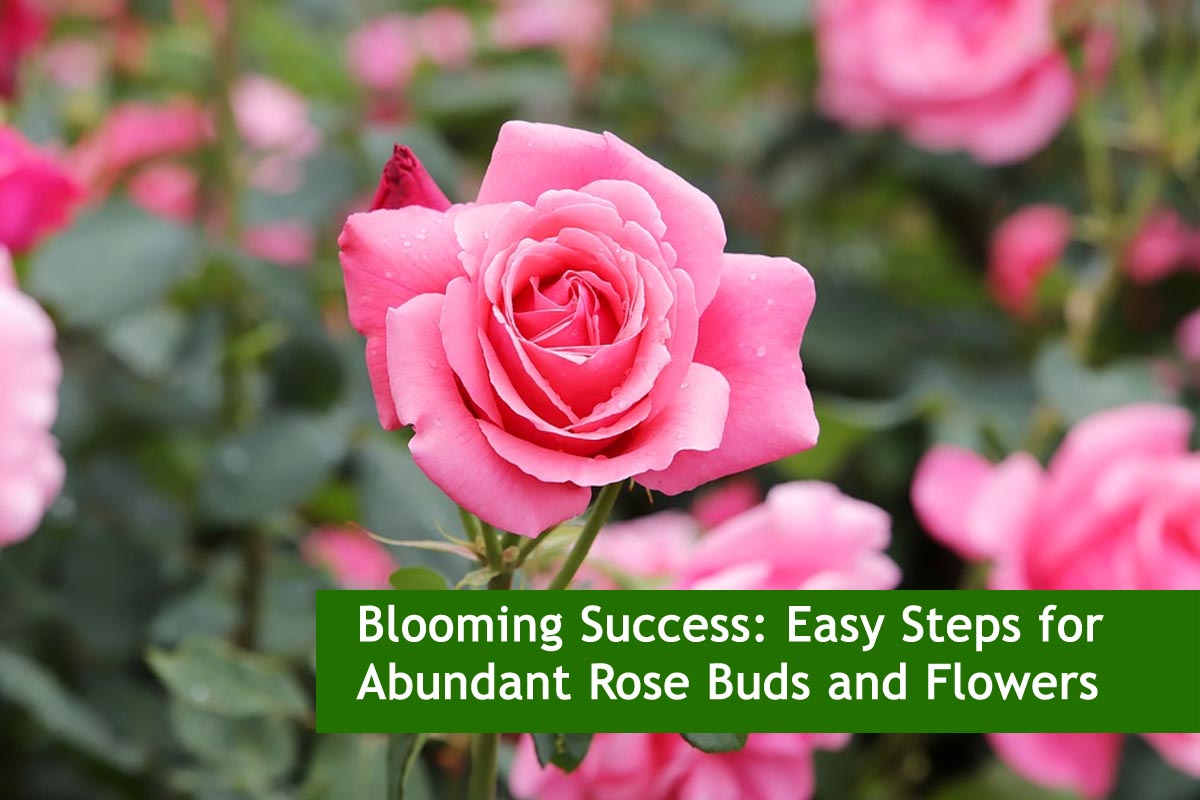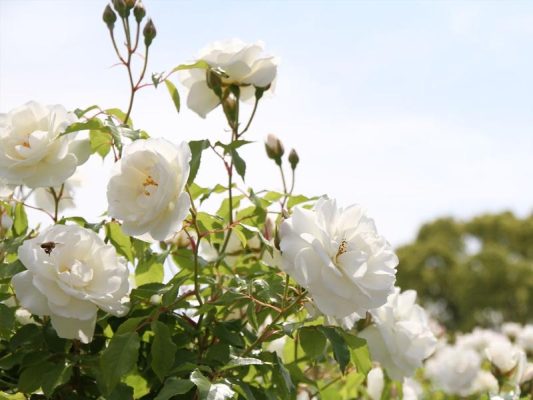
Blooming Success: Easy Steps for Abundant Rose Buds and Flowers
Roses are perhaps the most iconic and beloved flowers in gardens worldwide. With their enchanting fragrance and stunning array of colors, roses add a touch of elegance and beauty to any landscape. However, achieving abundant blooms requires proper care and attention. If you’ve ever wondered how to coax your rose plants into producing countless buds and flowers, you’re in the right place. In this guide, we’ll explore some easy steps to ensure your rose plants thrive and bloom to their full potential.
Easy Steps for Abundant Rose Buds and Flowers
Choose the Right Location:

The first step to success is selecting the perfect spot for your rose plants. Roses thrive in full sun, so choose a location that receives at least six hours of direct sunlight per day. Additionally, ensure the area has good air circulation to prevent diseases. Avoid planting roses near large trees or shrubs that may compete for nutrients and water.
Also Read This : Easy way to Propagate Roses from Cuttings
Prepare the Soil:
Roses prefer well-drained soil rich in organic matter. Before planting, amend the soil with compost or well-rotted manure to improve its texture and fertility. Ensure the soil pH is between 6.0 and 6.5, slightly acidic to neutral. Conduct a soil test if necessary and make adjustments accordingly.
Choose Healthy Plants:
When purchasing rose plants, select healthy specimens free from pests, diseases, or signs of stress. Look for plants with sturdy stems, healthy leaves, and well-developed root systems. Avoid plants with yellowing leaves, wilted stems, or black spots, as these may indicate underlying issues.
Also Read This : How to Propagate Roses Using Potato Cuttings
Plant Properly:

Planting roses correctly is crucial for their long-term health and productivity. Dig a hole twice as wide and deep as the plant’s root ball. Gently remove the plant from its container and loosen the roots before placing it in the hole. Backfill with soil, ensuring the plant is at the same depth as it was in the container. Water thoroughly to settle the soil around the roots.
Provide Adequate Water:
Adequate water is essential for the growth and blooming of rose plants. Water deeply and evenly, providing about an inch of water per week, depending on weather conditions. Avoid overhead watering, as wet foliage can increase the risk of fungal diseases. Instead, use a soaker hose or drip irrigation to water the base of the plants.
Also Read This : Guidelines for Successfully Transplanting a Rose Bush
Fertilize Regularly:
Roses are heavy feeders and benefit from regular fertilization throughout the growing season. Apply a balanced fertilizer formulated for roses according to package instructions. Start fertilizing in early spring as soon as new growth appears and continue every 4-6 weeks until late summer. Avoid fertilizing in late summer to prevent stimulating new growth that may be damaged by frost.
Mulch for Moisture Retention:
Mulching helps conserve soil moisture, suppress weeds, and regulate soil temperature. Apply a layer of organic mulch, such as shredded bark or compost, around the base of the plants, leaving a few inches of space around the stems. Mulch also gradually breaks down, enriching the soil with organic matter over time.
Also Read This : Sweet-Scented Thornless Roses: Fragrant Varieties with Minimal Thorns
Prune Regularly:

Pruning is essential for maintaining the health, shape, and blooming potential of rose plants. Remove dead, diseased, or damaged wood whenever necessary, making clean cuts with sharp pruners. Additionally, prune to encourage branching and increase airflow within the plant, which helps prevent diseases. The best time to prune depends on the type of rose, but generally, it’s done in late winter or early spring before new growth begins.
Also Read This : Preparing for Winter: A Guide to Pruning Your Roses
Monitor for Pests and Diseases:
Keep an eye out for common rose pests such as aphids, thrips, and spider mites, as well as diseases like powdery mildew, black spot, and rust. Inspect your plants regularly and take prompt action if you notice any signs of infestation or disease. Use organic or chemical controls as necessary, following label instructions carefully.
Deadhead Spent Blooms:
Deadheading, or removing spent blooms, encourages the production of new flowers and prolongs the blooming season. Snip off faded flowers with sharp scissors or pruners, making cuts just above a set of healthy leaves or leaf node. Deadheading also prevents the formation of rose hips, which divert energy away from flower production.
Also Read This : Exploring the Best Rose Gardens in the World
Provide Support if Needed:

Depending on the variety, some rose plants may require support to prevent their stems from bending or breaking under the weight of blooms. Install stakes or trellises near the plants and tie stems loosely with soft twine or garden tape to provide support without causing damage. This is especially important for tall or climbing rose varieties.
Also Read This : Unlocking the Treasure of Aloe Vera: Grow Your Own for Home Remedies
Protect from Extreme Conditions:
Roses are resilient plants, but they may need protection from extreme weather conditions such as strong winds, heavy rain, or frost. Consider installing windbreaks or providing temporary shelter during storms. In cold climates, apply a layer of mulch around the base of the plants in late fall to insulate the roots from freezing temperatures.
By following these easy steps, you can ensure your rose plants produce countless buds and flowers, creating a stunning display of beauty in your garden. With proper care and attention, your roses will reward you with their exquisite blooms season after season, bringing joy and delight to both you and your visitors. Happy gardening!




